Carbon capture and storage
Type of resources
Topics
Keywords
Contact for the resource
Provided by
Years
Formats
Representation types
Update frequencies
Scale
-
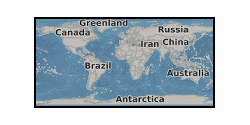
Controlled CO2 release experiments and studies of natural CO2 seeps have been undertaken at sites across the globe for CCS applications. The scientific motivation, experimental design, baseline assessment and CO2 detection and monitoring equipment deployed vary significantly between these study sites, addressing questions including impacts on benthic communities, testing of novel monitoring technologies, quantifying seep formation/style and determining CO2 flux rates. A review and synthesis of these sites studied for CCS will provide valuable information to: i. Enable the design of effective monitoring and survey strategies ii. Identify realistic site-specific environmental and ecosystem impact scenarios iii. Rationalise regulatory definitions with what is scientifically likely or achievable iv. Guide novel future scientific studies at natural or artificial release sites. Two global databases were constructed in Spring 2013, informed by a wide literature review and, where appropriate, contact with the research project leader. i. Artificial CO2 release sites ii. Natural CO2 seeps studied for CCS purposes The location and select information from each of these datasets are intended to be displayed as separate GoogleMap files which can be embedded in the QICS or UKCCSRC web server. These databases are not expected to be complete. Information should be added as more publications or become available or more case studies emerge or are set up. To facilitate this process, a contact email should be included beneath the map to allow viewers to recommend new or overlooked study sites for the dataset. Grant number: UKCCSRC-C1-31. These data are currently restricted.
-
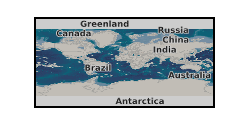
Revised full proposal cover sheet for scientific drilling (852-CPP2) 'GlaciStore: Understanding Pleistocene glaciation and basin processes and their impact on fluid migration pathways (North Sea)', submitted to Integrated Ocean Discovery Programme (IODP) April 2016. The full proposal cover sheet document is publicly available from IODP; the submitted full proposal document is restricted to the proponents for publication and for review and response from IODP. The proposal is a revision of full proposal 852-CPP in response to review by IODP. The lead submitter, on behalf to the GlaciStore consortium is Heather Stewart, British Geological Survey (BGS).The 32 proponents are from research and industry organisations in the UK, Norway, USA and Canada (BGS, Institute for Energy Technology, Lundin Norway AS, Memorial University of Newfoundland, SINTEF Energy Research, Statoil ASA, University of Bergen, University of Edinburgh, University of Oslo and University of Ottawa University of Texas at Austin). The revised full proposal cover sheet states the names of proponents of the 'GlaciStore' consortium and details for the lead submitter of the bid. The full proposal cover sheet comprises: an abstract of the submitted full proposal including description of project funding support as a Complementary Project Proposal: describes and states the scientific research objectives; summarises proposed non-standard measurements; tabulates details of the 13 proposed drill sites (revised from full proposal CPP-852) to address the scientific objectives. The objectives are to investigate: glacial history and sedimentary architecture; fluid flow and microbial processes in shallow sediments; and the stress history and geomechanical models for strata that have experienced multiple glacial and interglacial cycles. The table of revised proposed drilling sites includes designation of primary or alternate sites, the co-ordinates of the position and water depth at each proposed site, the objective for drilling and sampling and the depth to achieve the objective. The proponents, their affiliation, expertise and role for the submission are listed. UKCCSRC Grant UKCCSRC-C1-30.
-

The supporting data for C. Harris et al., 2021, 'The impact of heterogeneity on the capillary trapping of CO2 in the Captain Sandstone', International Journal of Greenhouse Gas Control. We supply experimental and numerical simulation data used in the paper. The supplied codes reproduce each figure. The codes are split into 2 folders, descriptions of each of the folders are given below: 0 - README. This contains detailed instructions on using the supplied files. 1 - Main simulations. This contains the code to produce the main CMG (Computer Modelling Group) simulations outlined in the paper, with various input variable files. 2 - Other figures. This contains the code to produce other figures within the paper which do not rely on numerical simulations, including the experimental data.
-
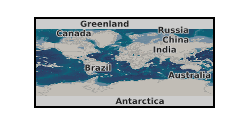
UKCCSRC Flexible Funding 2020. Experimental data are the acoustic emission (AE) signals collected with three AE sensors when CO2 leak from a CO2 storage cylinder under different pressures. '5MPa_20kgh-1' means the data was collected when the pressure was 5MPa and the leakage rate was 20 kg/h. The sampling frequency of AE signals is 3MHz. UKCCSRC Flexible Funding 2020: Monitoring of CO2 flow under CCS conditions through multi-modal sensing and machine learning.
-
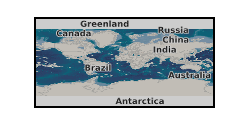
Measurement and monitoring of CO2 flows across the entire CCS chain are essential to ensure accurate accounting of captured CO2 and help prevent leaking during transportation to and from storage sites. This particular R&D need has been identified as one of the highest priority areas in the latest APGTF Strategy Report and in the UKCCSRC RAPID Handbook as well as in a recent study by NEL. The need for addressing measurement uncertainty and its importance for CO2 flows is a key factor in the CCS chain. The accurate measurement of CO2 is also vital to lift the strict regulations from legislative bodies off the full deployment of CCS and create a more positive public perception towards CCS. In addition, it is imperative to investigate the flow metering aspects of CO2 to inform the legislators and regulators and to have this underpinning knowledge available to the providers of the design, build and operation of CCS plants. In this project a cutting-edge technology for the measurement of CO2 flows in CCS pipelines will be developed. The technology will incorporate multi-modal sensing and statistical data fusion techniques. General-purpose flow sensors, including Averaging Differential Pressure, ultrasonic and Coriolis together with temperature, pressure and electrical impedance transducers, will be utilised to create a prototype multi-modal sensing system. A statistical data fusion method based on Bayes' rule for combining prior and observation information will be developed to integrate the outputs of the sensors and transducers. Various statistical data fusion models will be developed off-line and optimal data fusion models will be selected for on-line implementation. Meanwhile, a dedicated CO2 mass flow reference platform will be built using precision weighing techniques and its uncertainty will be established. Extensive experimental work will be conducted on the CO2 mass reference platform after implementing the on-line statistical data fusion models. The multi-modal sensing system will then be extensively tested under controlled flow conditions which resemble practical CCS conditions. The measurement uncertainty for each selected data fusion model will be reported together with the implication of costs, which will be a very informative source for users, manufacturers and researchers. Finally, the multimodal sensing system will be scaled up with the support of the industrial partner and evaluated on their large line (>DN250) flow test facility under simulated flow conditions. Effects of impurities in the CO2 flow on the performance of the flow measurement system will also be studied. Findings from the project will be disseminated to the UKCCSRC and a wider community. Grant number: UKCCSRC-C2-218.
-
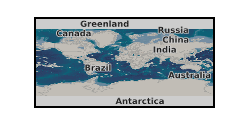
This project contributes significantly to the de-risking of a technology which has a significantly lower efficiency penalty than post-combustion capture using Monoethanolamine (MEA) scrubbing. The work here specifically targets two industrial sectors where MEA scrubbing is at a significant disadvantage (only ~ 30 % of the low-grade heat required for MEA scrubbing is present in a cement plant, for example [1]), and in both cases the spent CaO is valuable as an input to the process itself (either as the main feedstock for cement clinker production, or as a flux in iron production). The project builds on several current projects at both Imperial College and Cranfield University and offers excellent value for money because of these synergies. Grant number: UKCCSRC-C2-209.
-
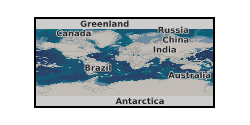
Technical report, January 2016. Development of a Scottish CO2 Hub can unlock the potential for CCS in the UK and Europe by providing early access for CO2 captured in the North Sea Region to extensive, well-characterised storage in the Central North Sea (CNS) at low risk, while creating value through CO2 utilisation. Available for download at http://hdl.handle.net/1842/15700.
-
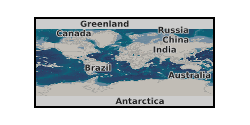
The aim of this project is to develop validated and computationally efficient shelter and escape models describing the consequences of a carbon dioxide (CO2) release from Carbon Capture and Storage (CCS) transport infrastructure to the surrounding population. The models will allow pipeline operators, regulators and standard setters to make informed and appropriate decisions regarding pipeline safety and emergency response. The primary objectives planned to achieve this aim are: 1.To produce an indoor shelter model, based on ventilation and air change theory, which will account for both wind and buoyancy driven CO2 ventilation into a building. The model will be capable of incorporating varying cloud heights, internal building divisions, internal and external temperature differences and impurities. 2.To create an external escape model that will determine the dosage received by an individual exposed to a cloud of CO2 outdoors. The model will be capable of incorporating multi-decision making by the individual in terms of the direction and speed of running, wind direction, the time taken to find shelter and the time required to make a decision, on becoming aware of the release. 3.To build a Computational Fluid Dynamics (CFD) model describing the effects of ingress of a CO2 cloud into a multicompartment building. 4.To validate the indoor shelter model and the CFD model against experimental test data for a CO2 release into a single compartment building. 5.To validate the indoor shelter model against further CO2 ingress scenarios modelled with CFD. 6.To conduct a sensitivity study using the shelter and escape models to calculate the dosage that an individual will be expected to receive under different conditions building height, window area, wind direction, temperature gradient, wind speed, atmospheric conditions, building size, running speed, direction of travel and reaction time. 7.To illustrate how the output from the models, in terms of dosage, can be used as input to Quantitative Risk Assessment (QRA) studies to determine safe distances between CO2 pipelines and population centres. 8.To demonstrate how the output from the models, in terms of dosage, can be used as input to the development of emergency response plans regarding the protection afforded by shelter and the likely concentrations remaining in a shelter after release. 9.To disseminate the findings of the research to relevant stakeholders through publication of academic journal papers as well as presentations at conferences, UKCCSRC meetings and relevant specialist workshops. Grant number: UKCCSRC-C2-179.
-
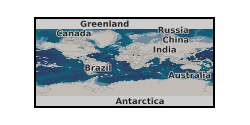
Many of the research results from the SACS and CO2STORE projects are published in the scientific literature but in a somewhat fragmented form. This report consolidates some of the key findings into a manual of observations and recommendations relevant to underground saline aquifer storage, aiming to provide technically robust guidelines for effective and safe storage of CO2 in a range of geological settings. This will set the scene for companies, regulatory authorities, nongovernmental organisations, and ultimately, the interested general public, in evaluating possible new CO2 storage projects in Europe and elsewhere. The report can be downloaded from http://nora.nerc.ac.uk/2959/.
-
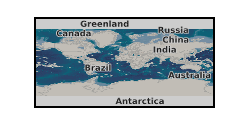
The data consists of an extended abstract submitted to the '8th Trondheim Conference on CO2 Capture, Transport and Storage', Trondheim, Norway, 16-18th June 2015. The abstract describes work carried-out on behalf of the 'Fault seal controls on CO2 storage capacity in aquifers' project funded by the UKCCS Research Centre, grant number UKCCSRC-C1-14. The Captain Sandstone saline aquifer has a potential to store large volumes of CO2 as part of greenhouse gas mitigation strategies, however it is known to be affected by regional faults, some of which extend to the seabed. An in situ stress analysis is performed in order to deduce the stresses affecting these faults and to assess their geomechanical stability.
 NERC Data Catalogue Service
NERC Data Catalogue Service